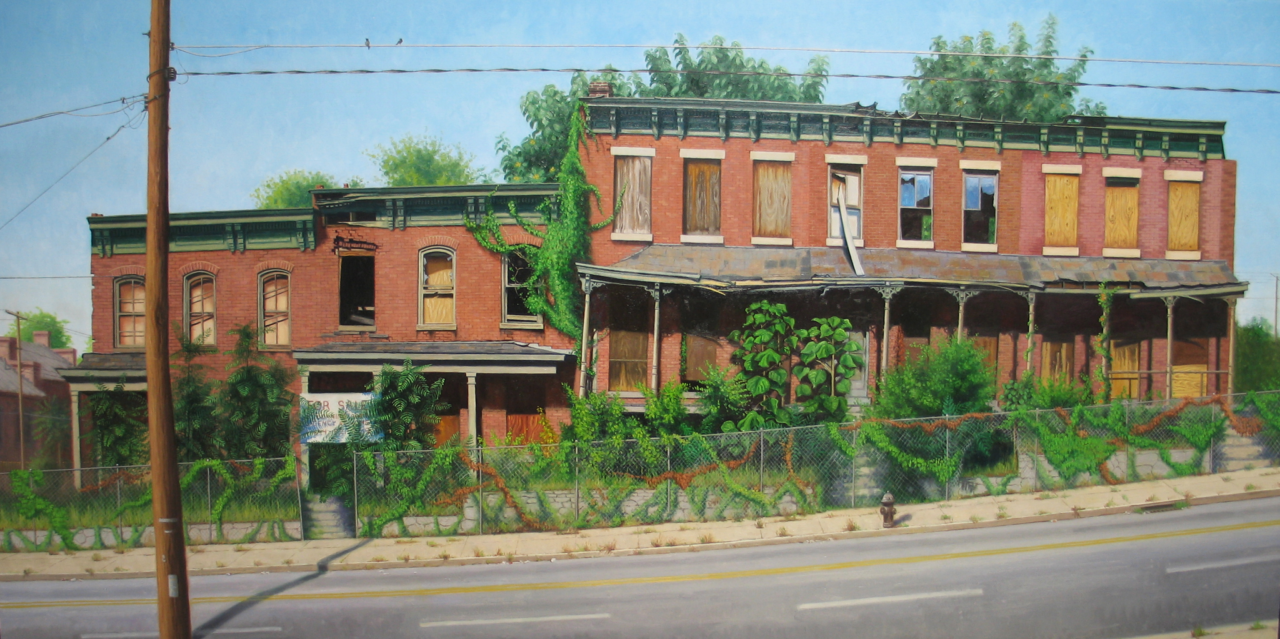When we lived in Virginia, we spent the summers on the Northern Neck, an unprepossessing area patch-worked together by the relatively poor truck farms of the locals and vacation homes for more wealthy people from Richmond and Washington, DC. My first impressions of the area were not favorable; I found the brackish land to be too flat, too monotonous, too scrubby.
But one thing that quickly caught my attention were a number of old farm houses that had been abandoned and left to rot in the middle of their respective farmlands. The demographics of the area were such that when the farmers’ children grew up, they moved off to the cities, leaving no one to work the farms. And then when the farmers themselves died, the houses were left to fall apart and litter the landscape like wooden carcasses.
I remembered reading in Kenneth Clark’s Landscape into Art that landscape painting, in Clark’s view, was supposed to engender a “sense of well being”. Well these houses did no such thing. They gave off a tragic, deathly sense of ‘not well being’ that I found extremely moving.
I have frequently thought of the relationship between houses and people. The house is a fertile metaphor for many human qualities. Houses, in myriad ways, remind us of our bodies. Like people, houses have most of the important features on the front; the backs are plainer and reserved for the removal of trash. The top of a column is called a capital, or head, while architectural members are built on ‘footers’. By extension, houses also remind us of our families, as in ‘the House of Atreus’, and they stand in for our communities enough so that we appoint a House of Representatives.
The houses that I came across were in very different stages of disintegration. Some had merely lost windows and doors and had sagging rooflines. Others were starting to completely come undone; pieces of the roofs had fallen off, vines were ripping apart the clapboard and insects, birds and snakes had begun to take up residence. If a house had been abandoned for a very long time, it became completely enveloped by vegetation. Some, so much so, that I barely knew that there was a house inside the verdant mass. In these late stages of abandonment, it was as if the earth was starting to reclaim the house and take it back into its arms.
These abandoned houses made me think of how hard we constantly have to fight against entropy and disintegration. Any homeowner knows this; something is always breaking and in need of repair. These houses reminded me that life is a constant struggle, and of what it takes to stay healthy and functional.
